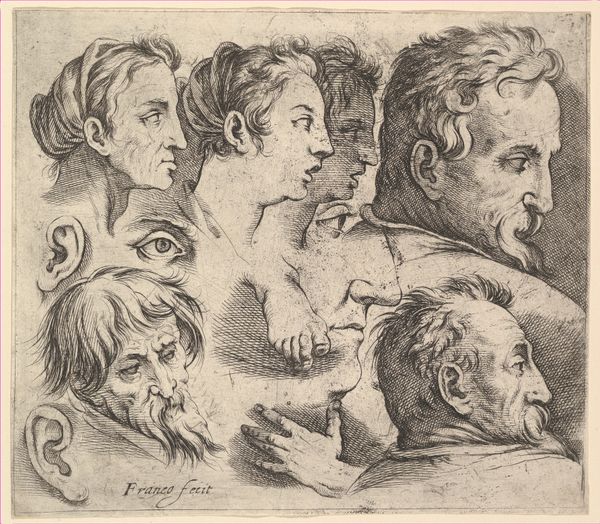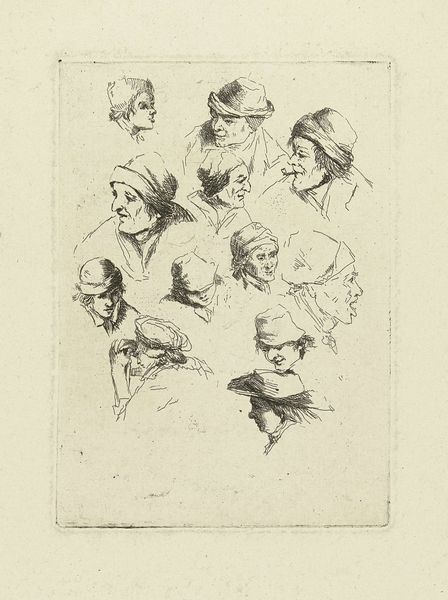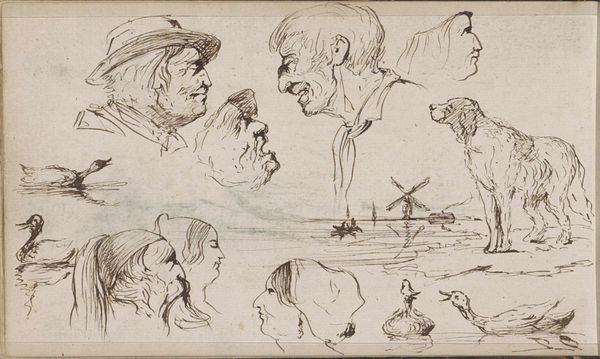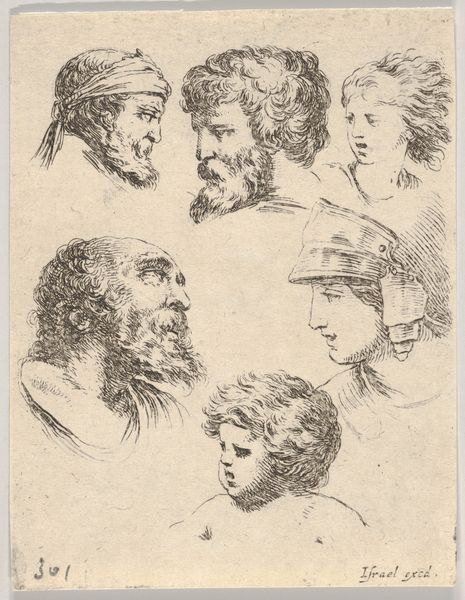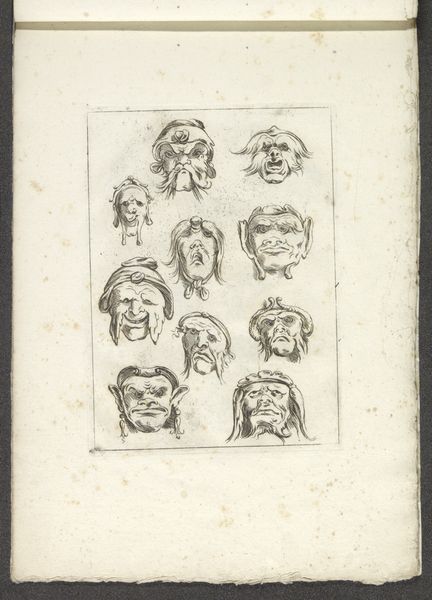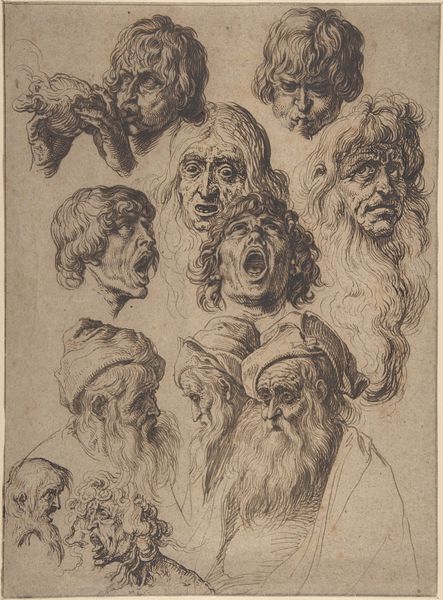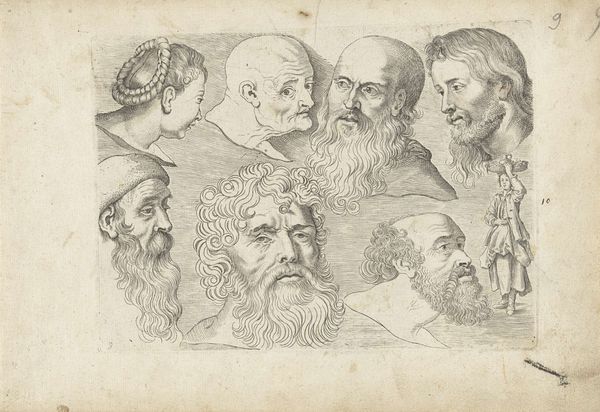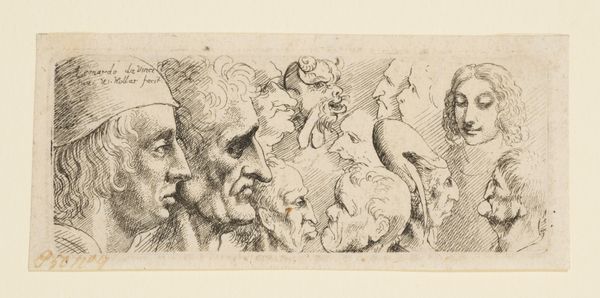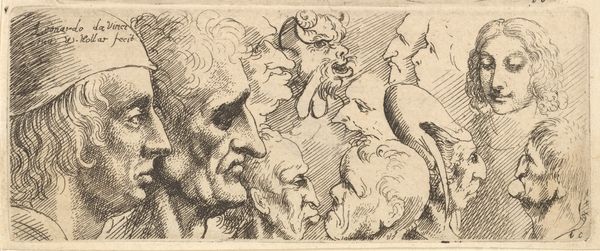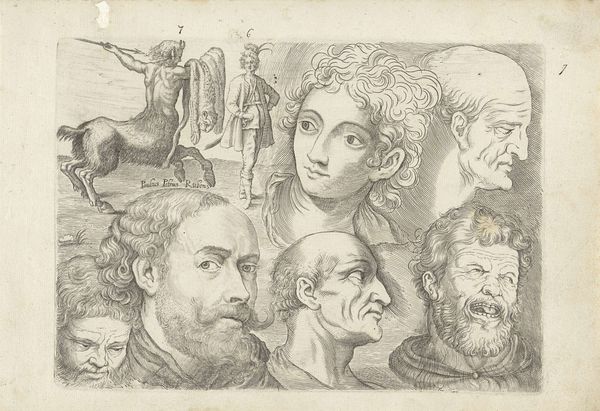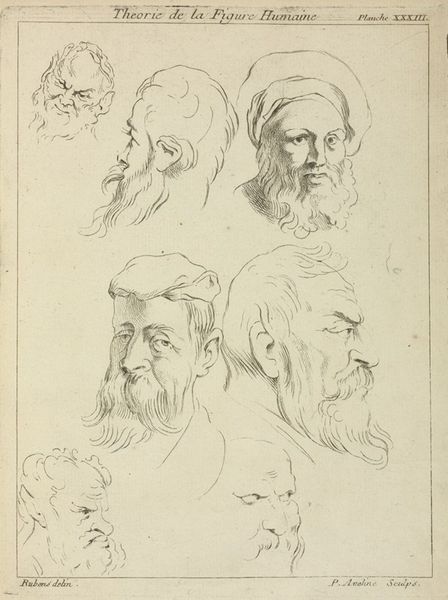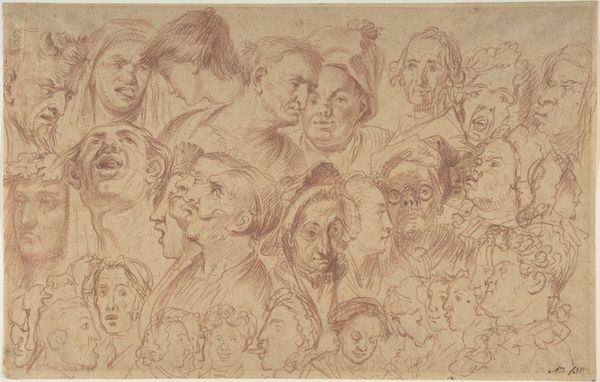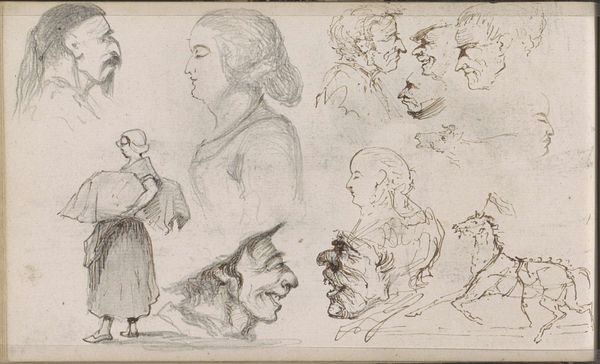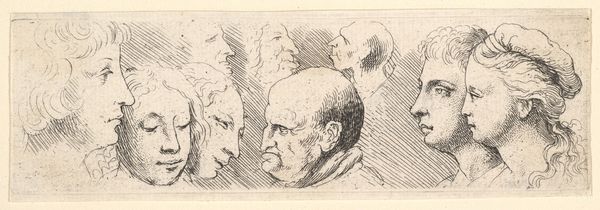
Six Heads, Three Feet, Two Ears, Six Eyes, Four Lips 1510 - 1561
0:00
0:00
drawing, print, engraving
#
portrait
#
drawing
#
head
# print
#
mannerism
#
personal sketchbook
#
sketchbook drawing
#
portrait drawing
#
tattoo art
#
engraving
Dimensions: sheet: 6 13/16 x 9 1/16 in. (17.3 x 23 cm) trimmed to platemark
Copyright: Public Domain
Editor: So, this is Battista Franco’s “Six Heads, Three Feet, Two Ears, Six Eyes, Four Lips,” dating sometime between 1510 and 1561. It’s a pen engraving and quite small in scale. There's something both classical and slightly unsettling about it. What's your take? Curator: Immediately, I am struck by the deliberate fragmentation, typical of Mannerist art, and how it taps into the human desire to understand ourselves. Franco provides an intense focus on the separate elements of the face and body. Where do you think the continuity of these images emerges? Editor: I guess, even though fragmented, each part feels familiar, like types we know from classical art. So, is it meant to be like a study sheet or more of a statement about representation? Curator: It is likely both, containing some historical imagery as well as the demonstration of technique and artistic experimentation. See how these fragmented portraits and body parts still recall antique models, but presented in this disjointed way? They're echoes. Battista is reaching back, but presenting it as something entirely new, with these symbols almost suspended outside of history, wouldn't you agree? Editor: That's interesting. I hadn't considered the “echoes” idea, but I see it now. Is this tension – past and present - what makes the image resonate so strongly? Curator: Precisely! And the strangeness too. In many cultures, representing fragmented body parts can relate to magical or apotropaic rituals. Symbols are the meeting point of the mundane and magical. It serves as a potent reminder of the enduring power of imagery and symbolic language over centuries. Editor: Well, I will look at symbolist art differently from now on, thanks to you!
Comments
No comments
Be the first to comment and join the conversation on the ultimate creative platform.
